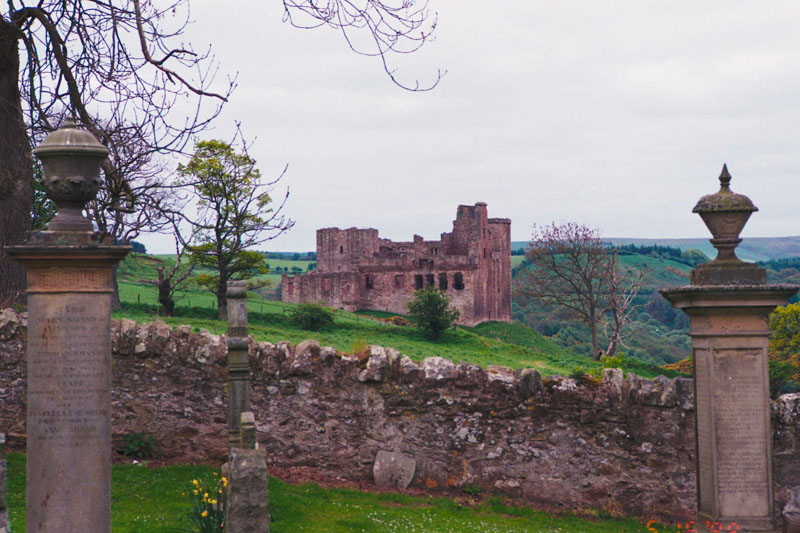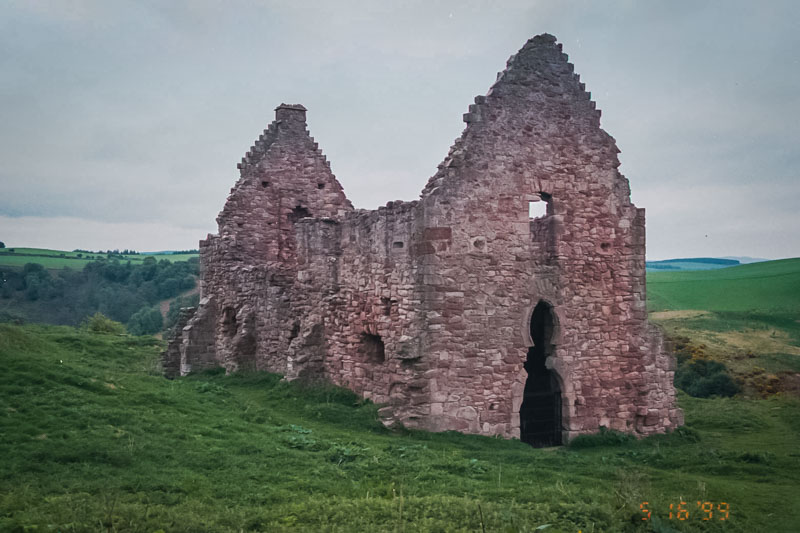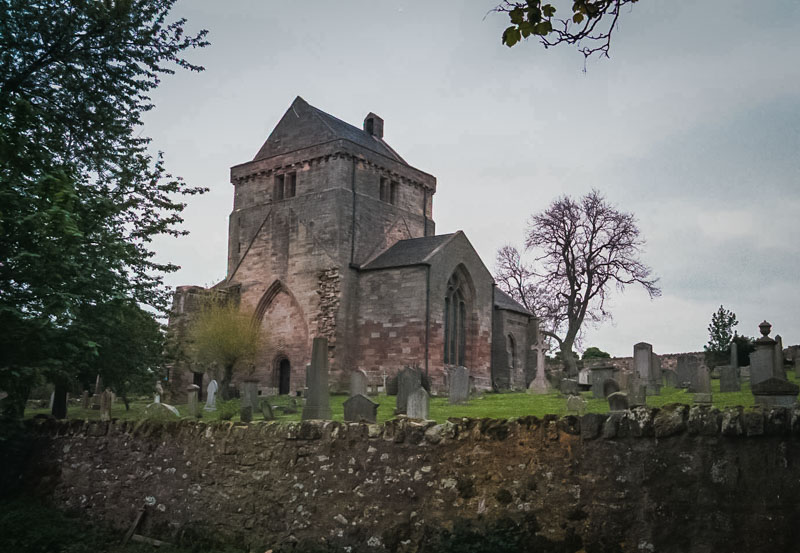
Crichton Castle is built around a large square courtyard dominated by a rectangular tower house that most likely built by John de Crichton in the late 14th century. The tower house is the oldest part of the castle. A gatehouse was added in the 1440 by John de Crichton’s son William, just to the north of the tower house. William de Crichton became Lord Chancellor of Scotland, and he virtually ruled Scotland during the early years of James II’s reign.
The castle was originally the property of the Crichton family, and started in 1370. It was here that Sir William Crichton entertained the Earl of Douglas and his brother before having them murdered at Edinburgh Castle in 1440. Crichton founded the Collegiate church to house priests to pray for his salvation. He probaby needed it.
In 1445 John Forrester of Corstorphine stormed the castle and destroyed it’s outbuildings. In 1483 the castle was confiscated by James III after William, 3rd Lord Crichton was involved in a conspiracy against the king. William later escaped to England and Crichton was given to Sir John Ramsey, but he in turn was forfeited after the death of James III in 1488 and James IV gave it to Patric Hepburn, Lord Hailes, in 1488.

The castle was captured in 1559 in the Scottish Reformation by the Earl of Arran. The last phase of building in 1580-90 enlarged the north range and added an arcade at ground level facing the couryard. The whole wall was decorated in a diamond-pattern facade. This is copied from the italian Palazzo dei Diamanti at Ferrara. This was the work of Francis, Earl of Bothwell (cousin to Mary, Queen of Scots’ Bothwell) who had spent time in Spain and Italy. The castle passed out of Francis’ hands in 1593 and then passed through many families, becoming a ruin.

The west wing contains two kitchens, one 15th century and one 16th century, side by side, although probably not used at the same time.
The south tower originally rose three stories, and the south-west tower rose to six stories. This last range contained living quarters. The original entry, on the ground floor, was later blocked up. The castle is said to be haunted by a horseman who enters the castle by the original gate. Outside the castle are the stables, which are reputed to be haunted by the ghost of William Crichton.
Crichton Collegiate Church nearby was founded by William Crichton in 1449. It is incomplete — it lacks a nave. The church is still active, however, and contains a quaint churchyard.



